proj1
Proj1
1.1 Boolean Logic
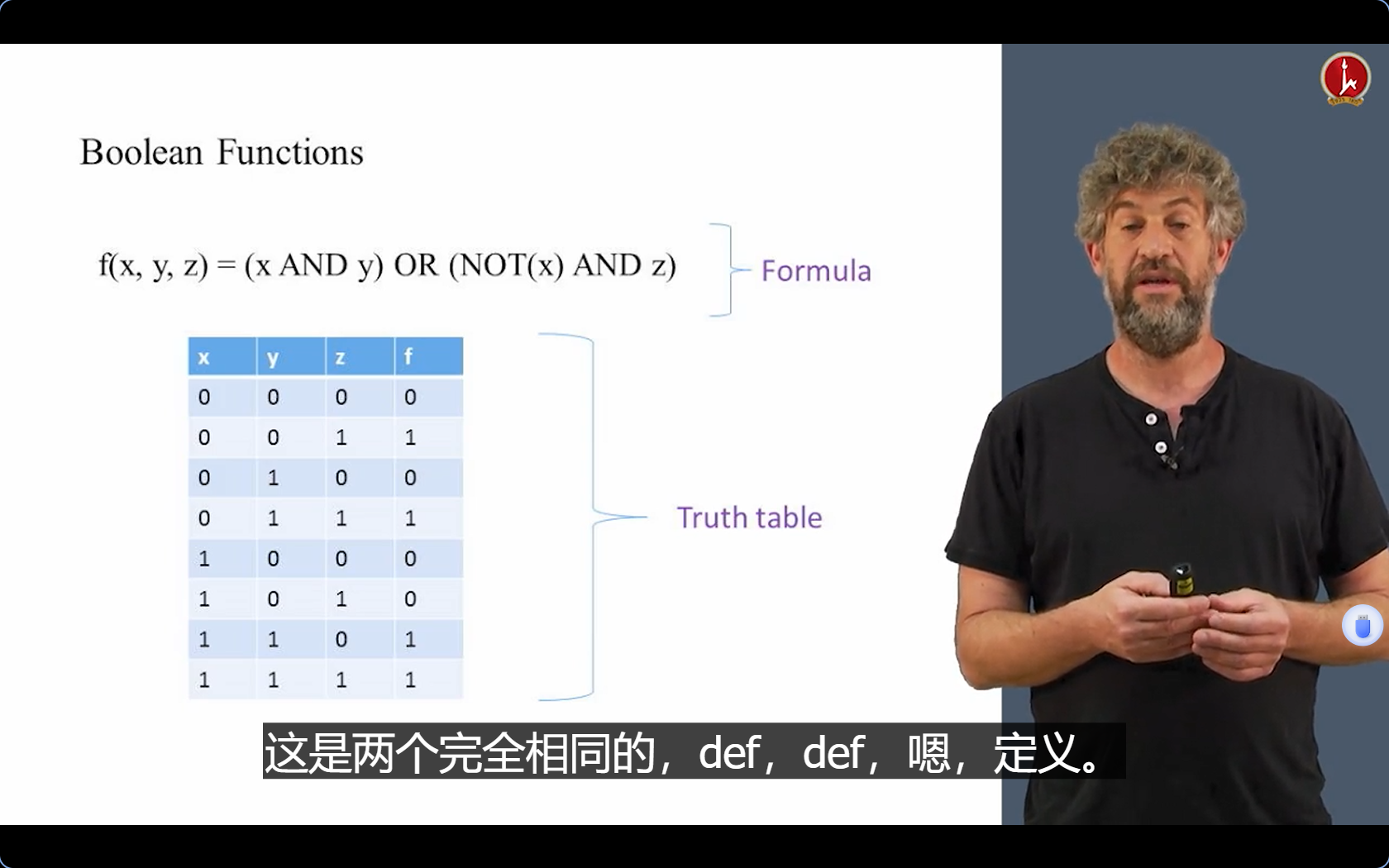
⭐Some useful equations
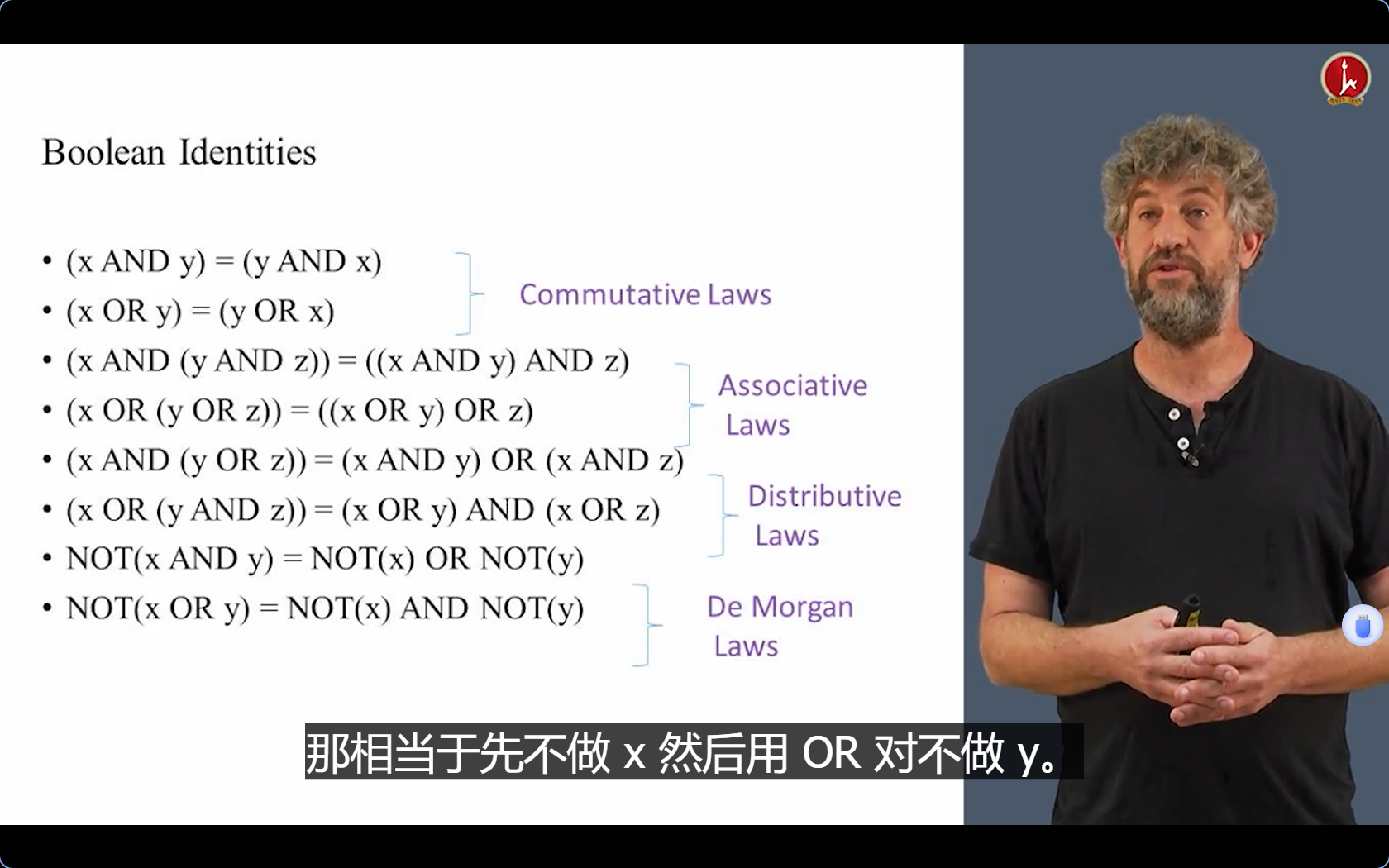
→Boolean Algebra can be 化简

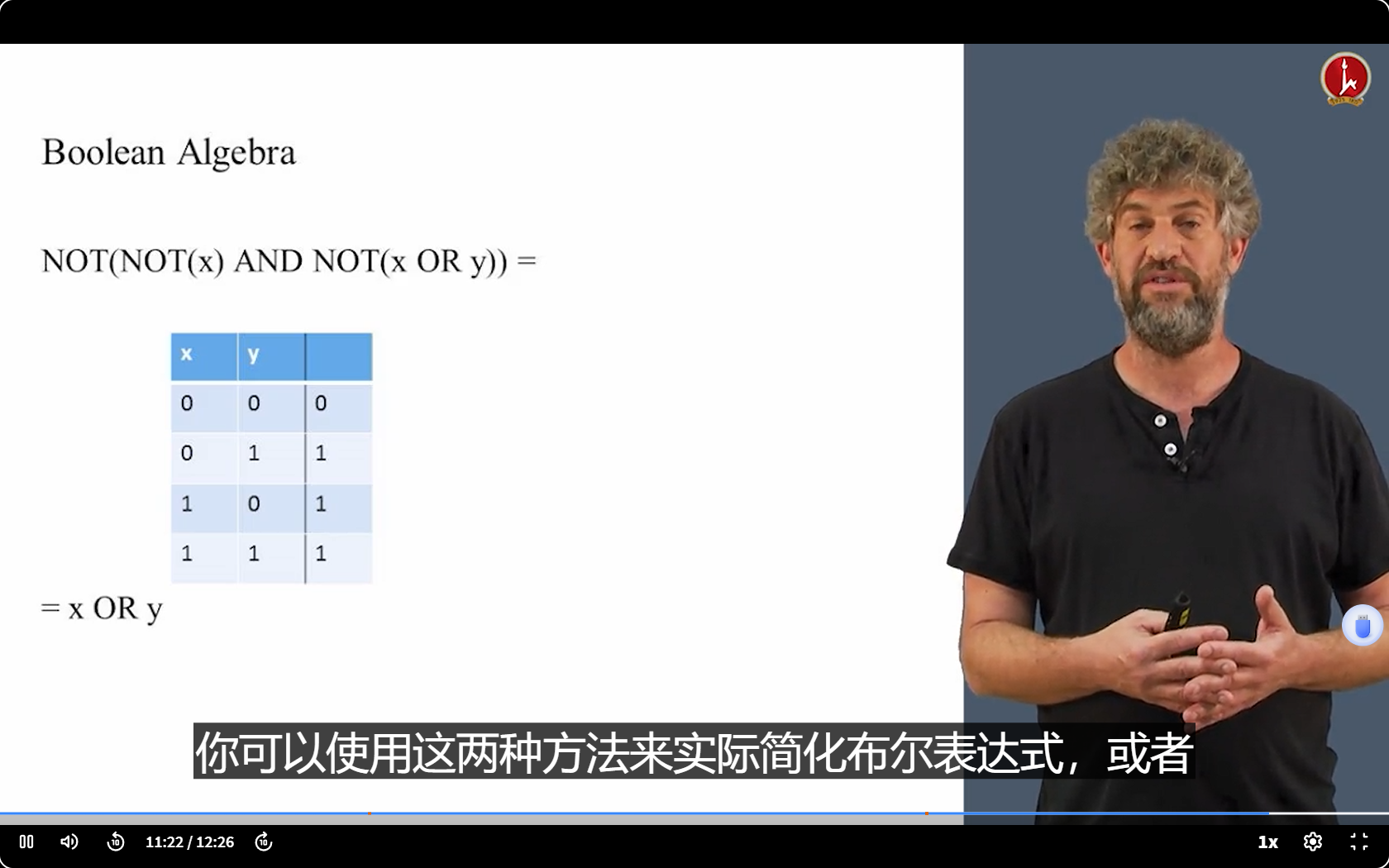
(Two way : ①equations,②write down the truth table)
1.2 Boolean Function
001:
- 理论上,任何布尔函数都可以用NotAndOr等表示出来(通过真值表选取f=1的情况)(做芯片有用)
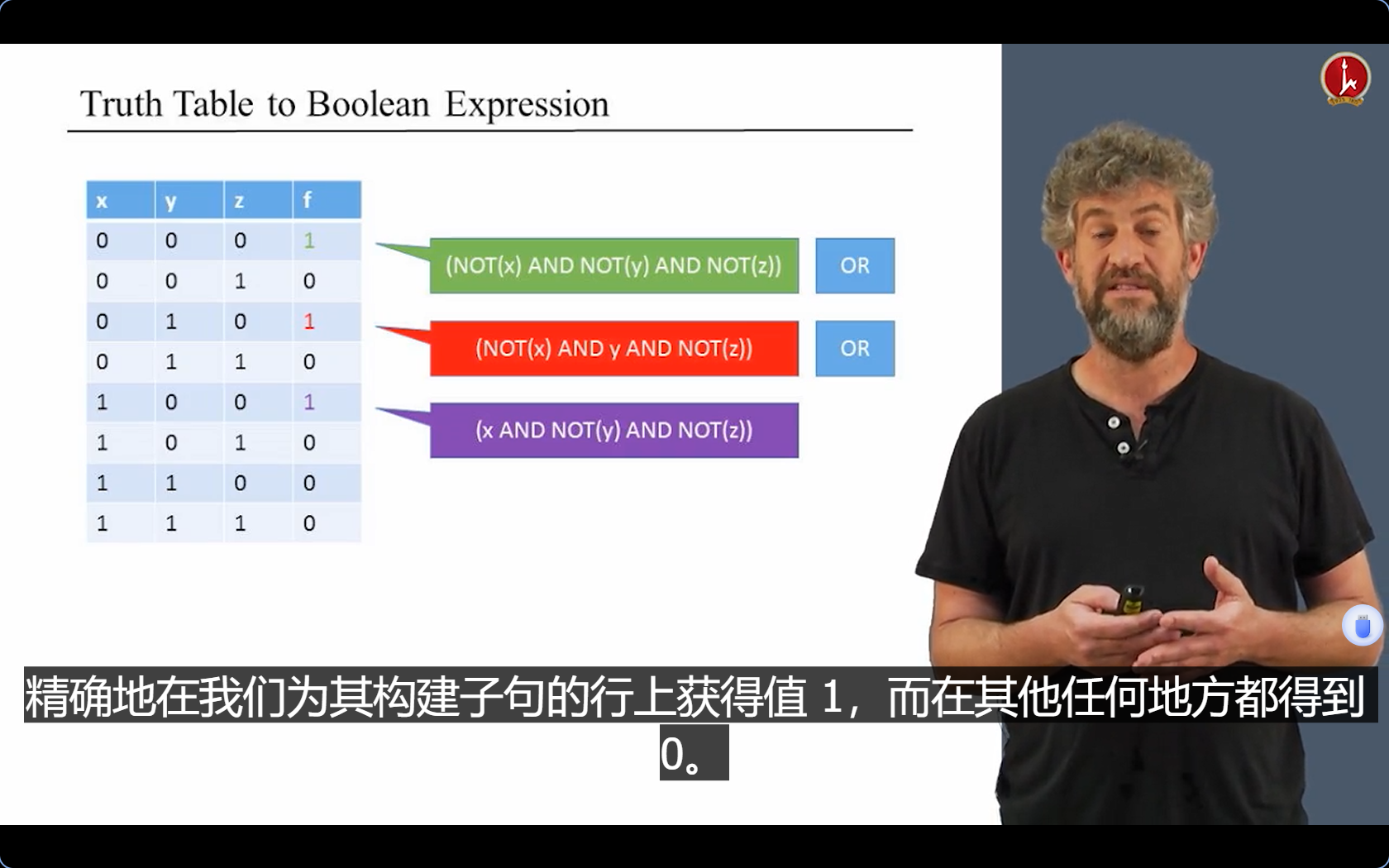

002:
- (or可以通过And和Not表示)

003:
- 而Nand可以表示出AndNot芯片(根本的根本)


1.3 Logic Gates
上一节是抽象的逻辑运算,这一节是实际的芯片/逻辑门

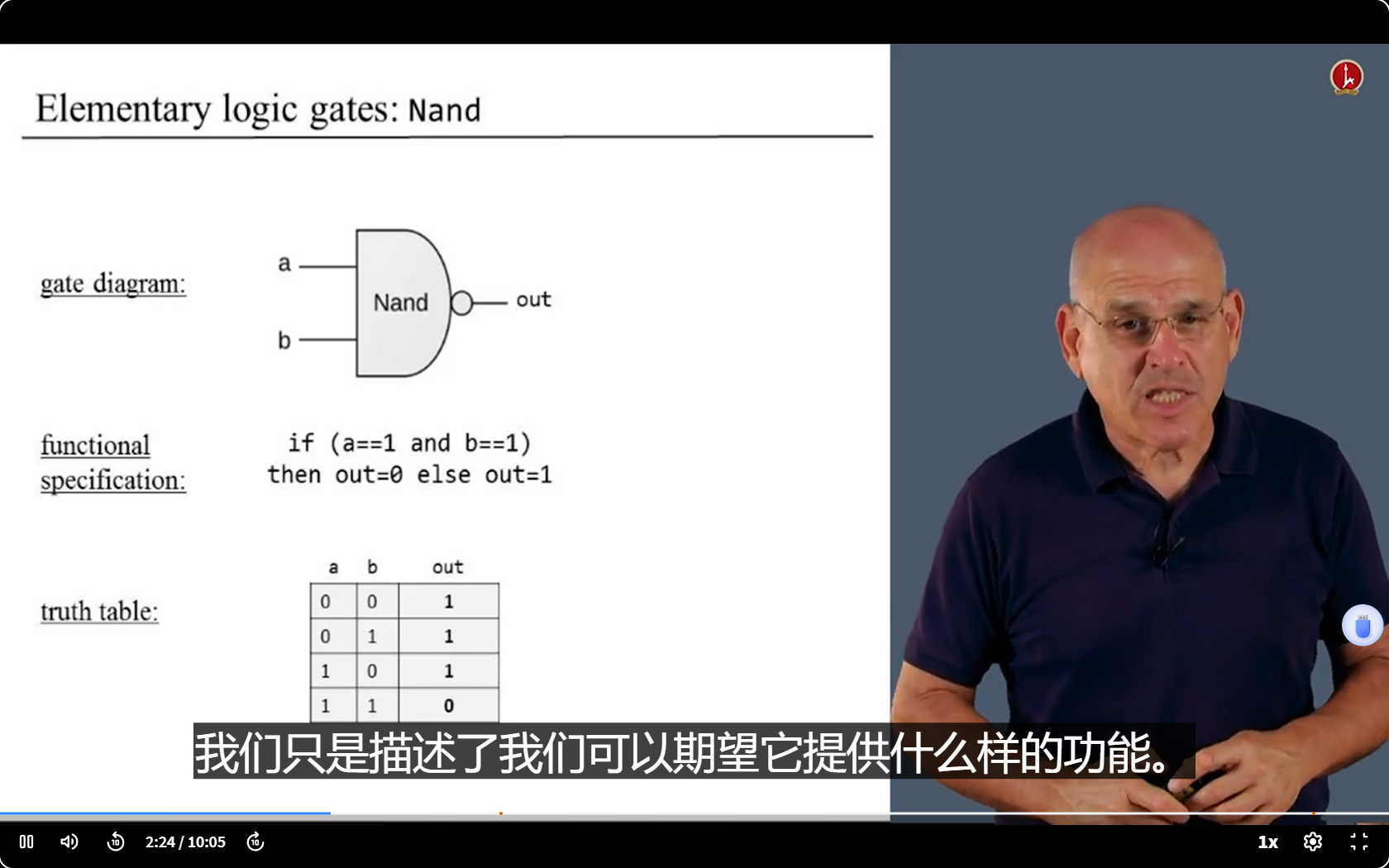
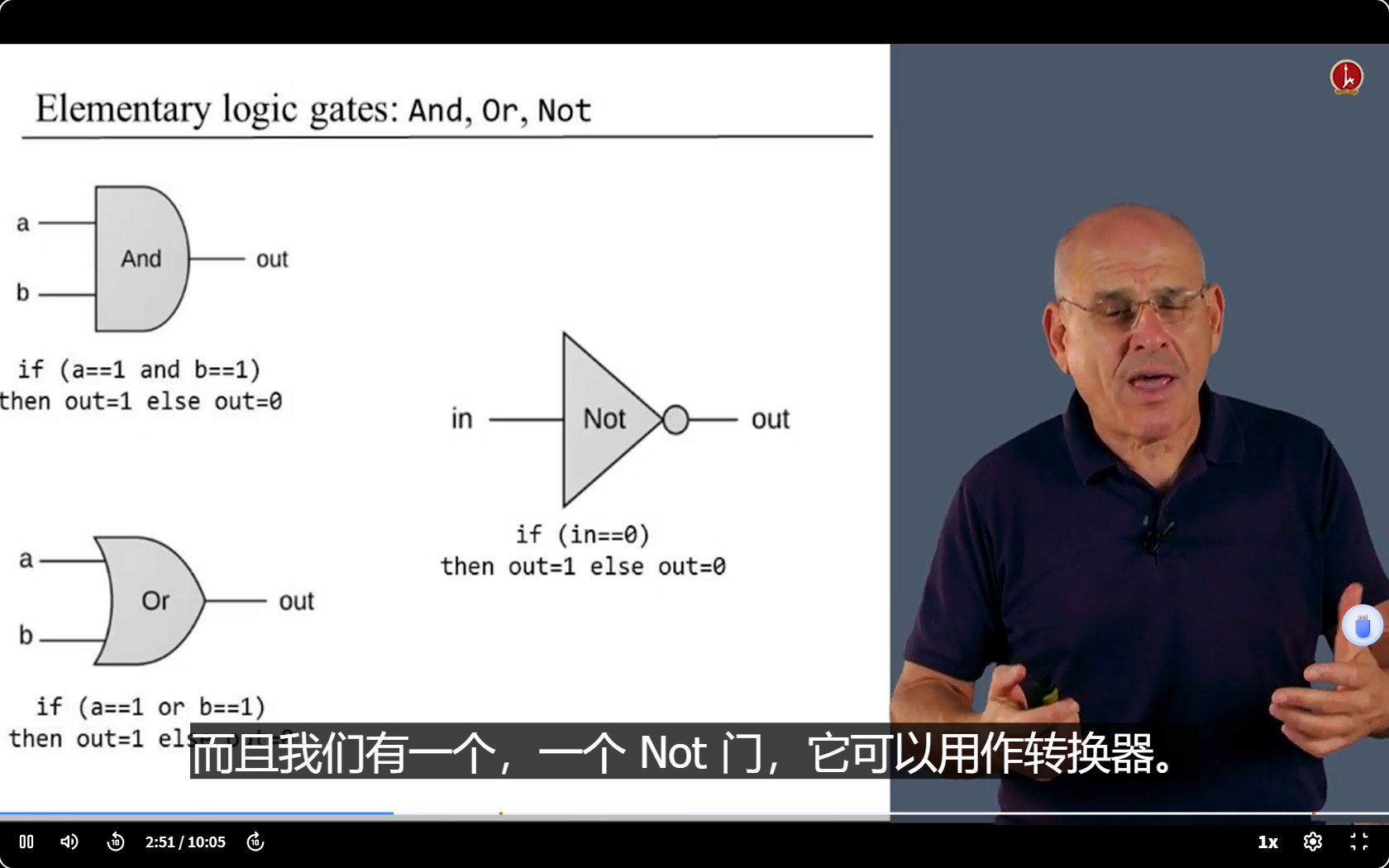

一个接口,可以有不同的实现

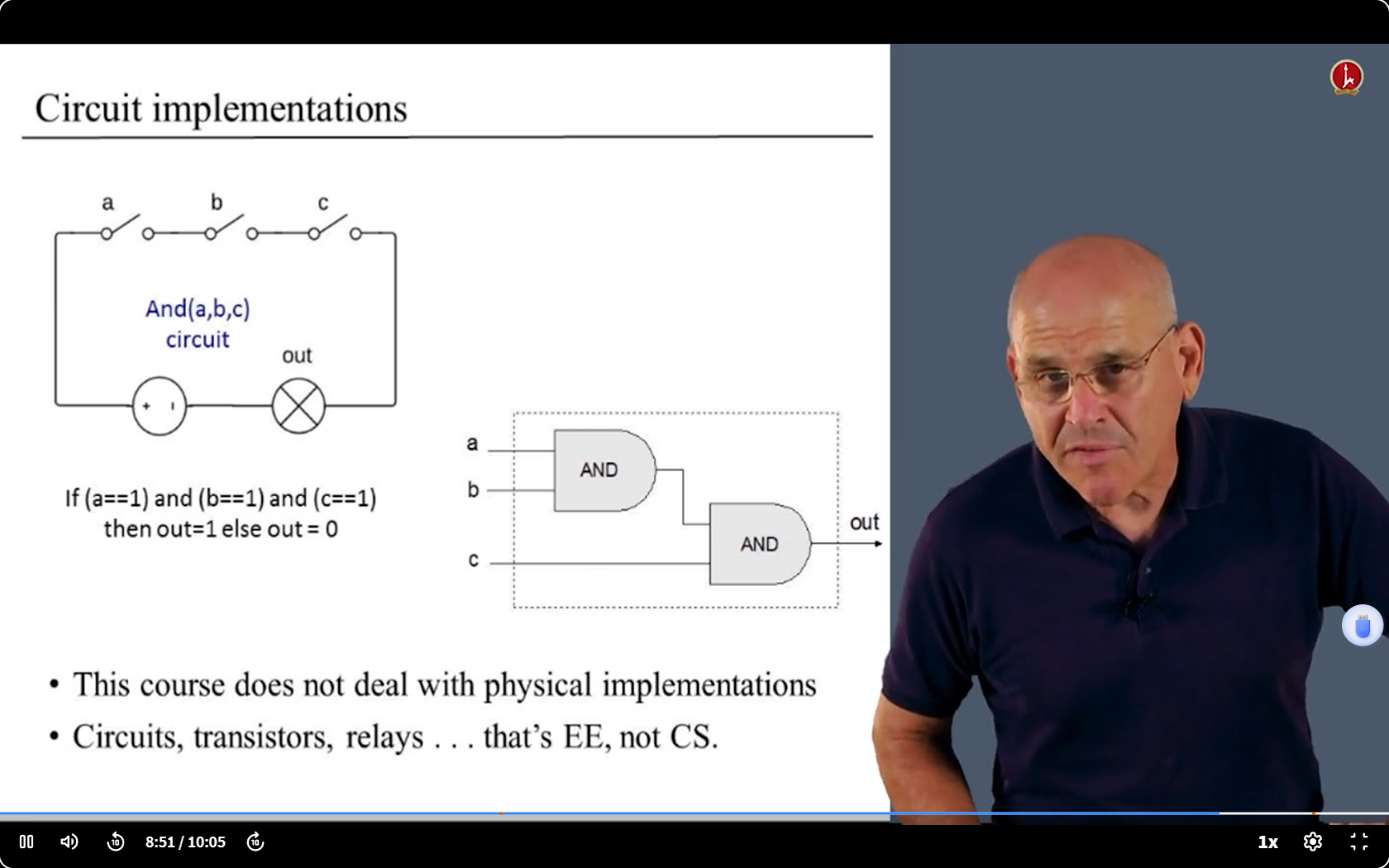
1.4 Hardware Description Language
一种硬件描述语言(做硬件/芯片用的)

芯片接口 和 芯片实现
⭐实现:用真值表看1,写出布尔函数化简,画出逻辑图



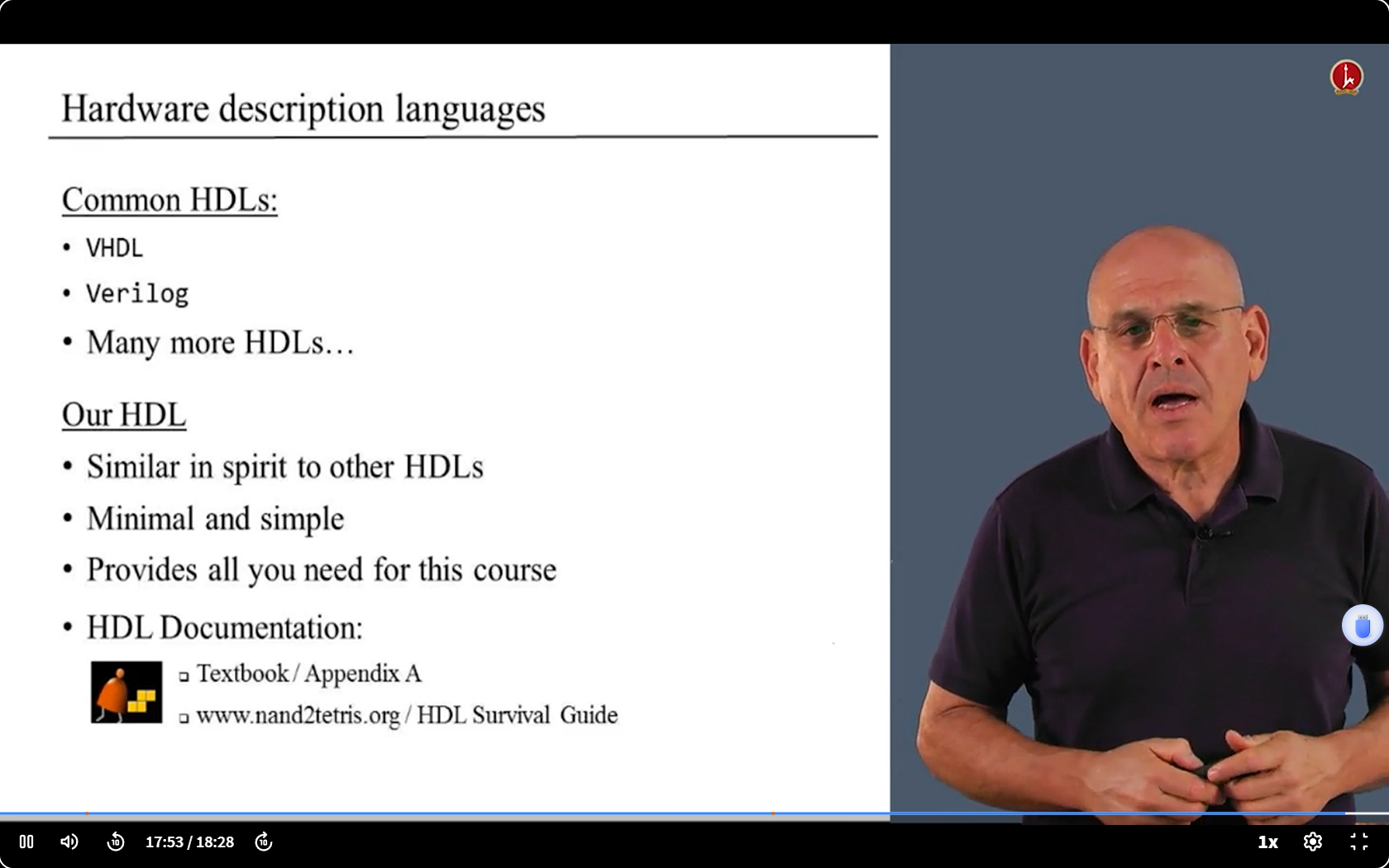

1.5 Hardware Simulation
- for 模拟芯片测试
- way:在给定的硬件模拟器中 + 使用编写的测试文件
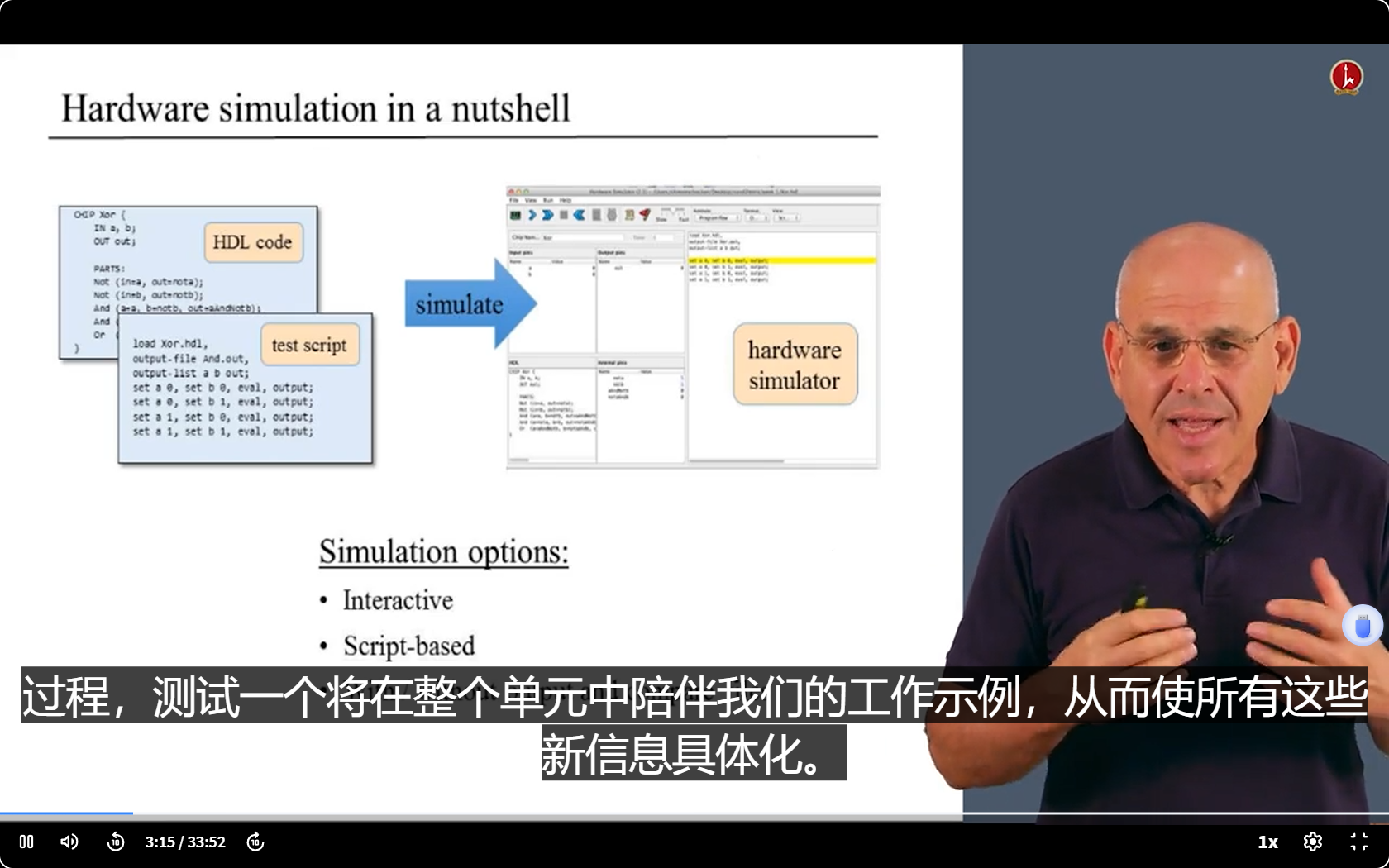
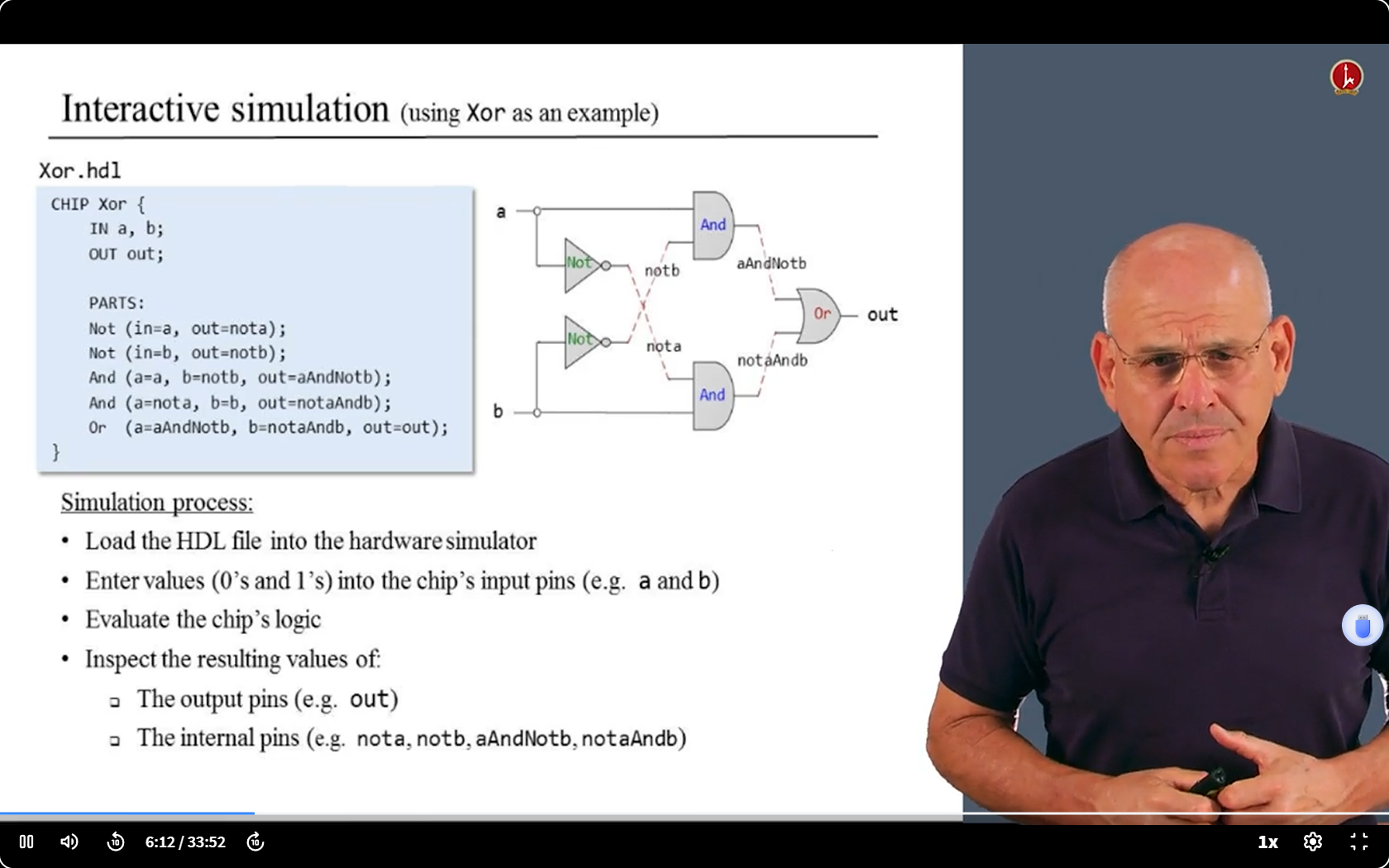
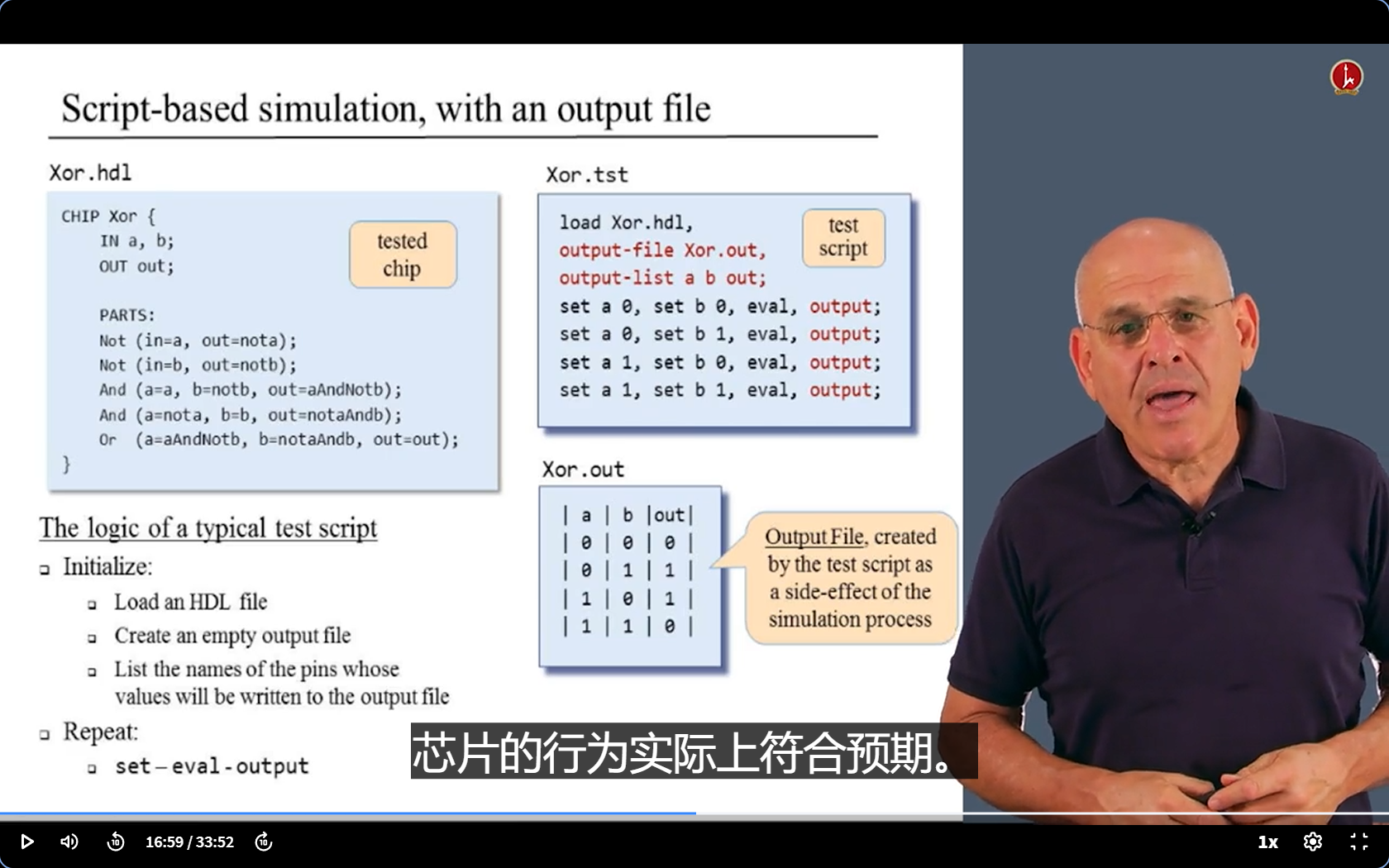

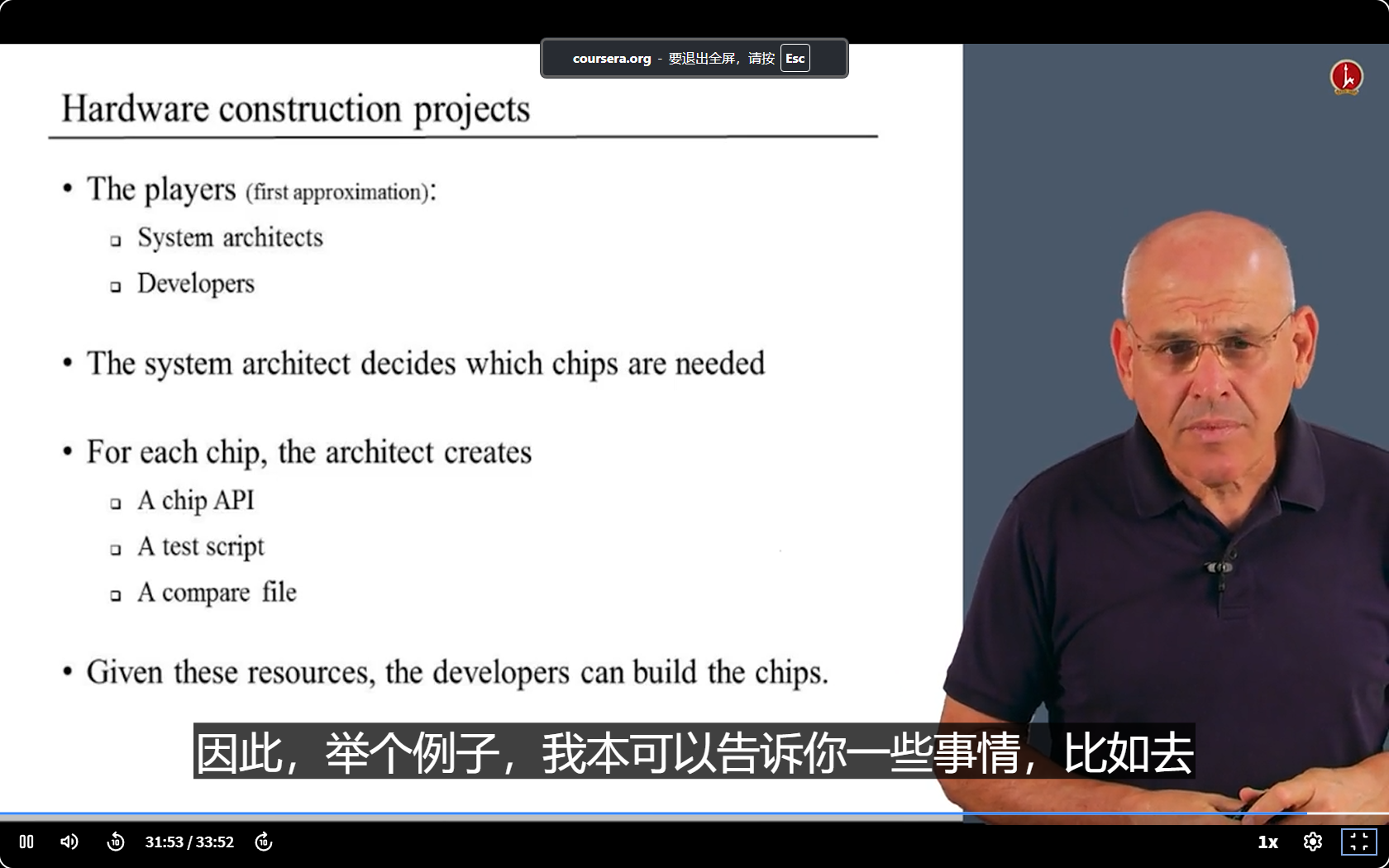
1.6 Mutil-bit Buses
多位总线(eg16位总线,一条线上有16个位bit)
(最左边第一位是高位。 最右边的最低位一般标记为第 0 位)


⭐ useful

说明中第一句的意思是:可以进行多个output,比如前8位输出,后八位输出,全部输出
1.7 proj 7 preview
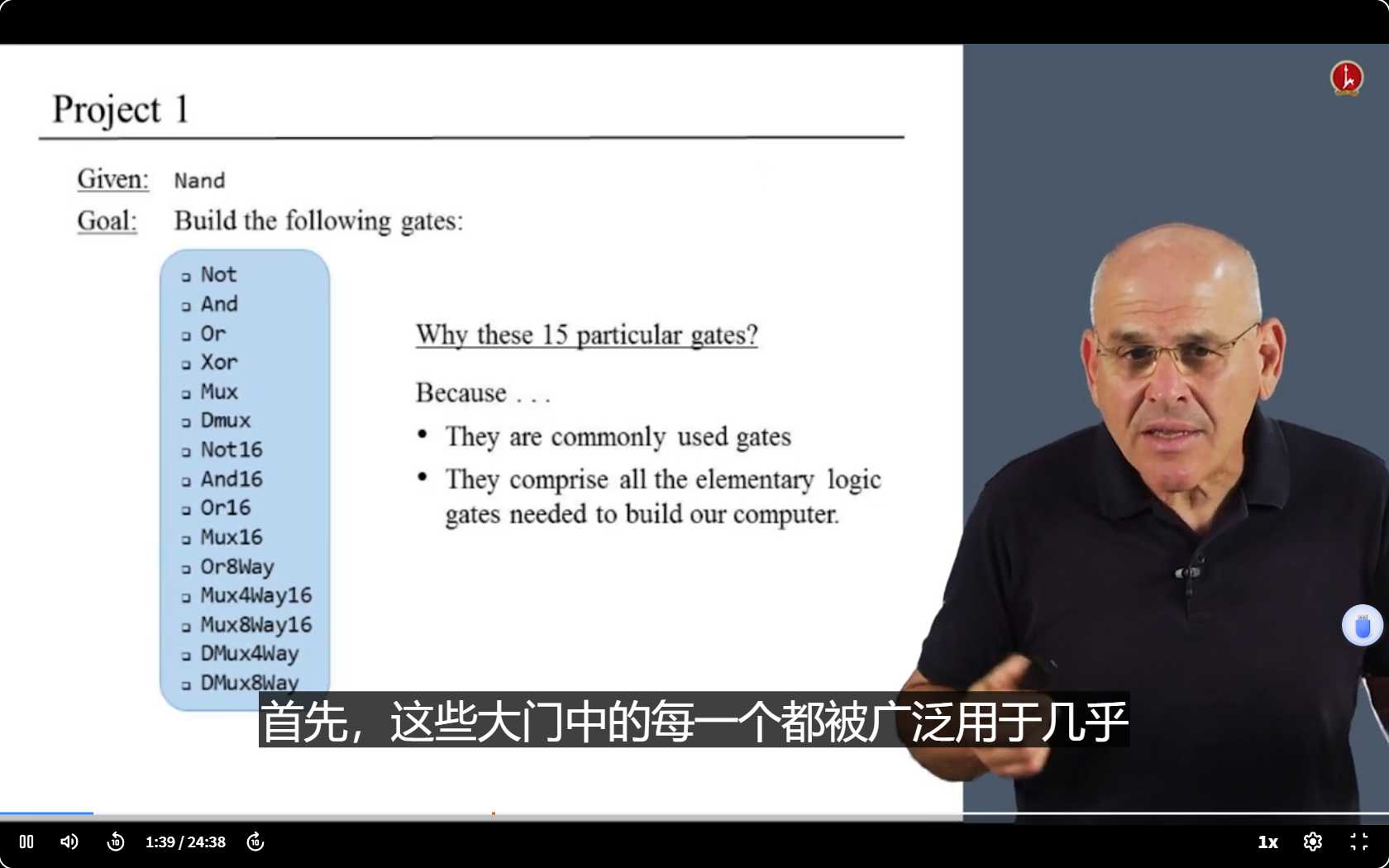

tip几个


(既可以用作And门,也可以用作Mux门)



And 16 : 两个输入,都是16位的,一个输出(每位进行And运算),也是十六位的
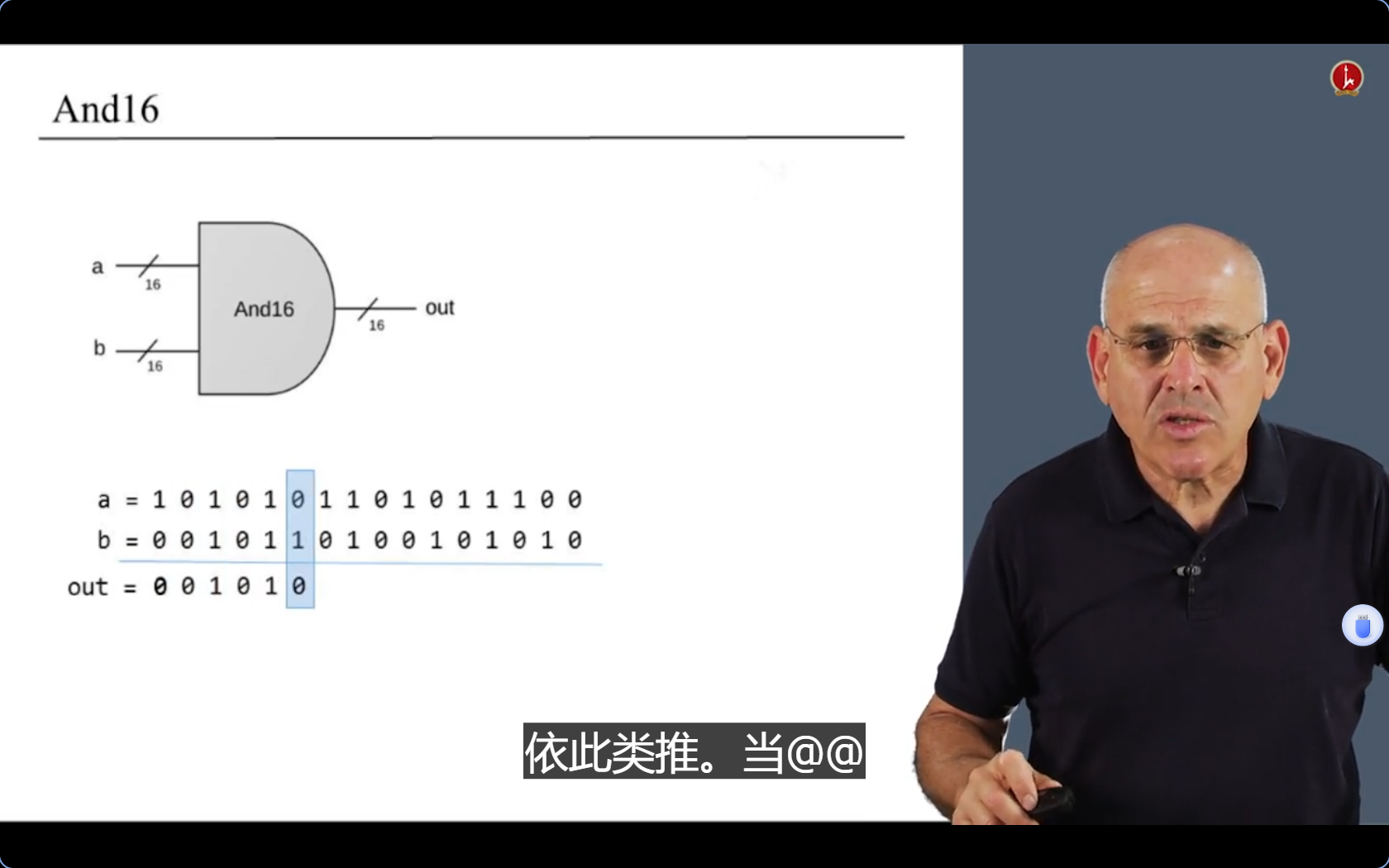
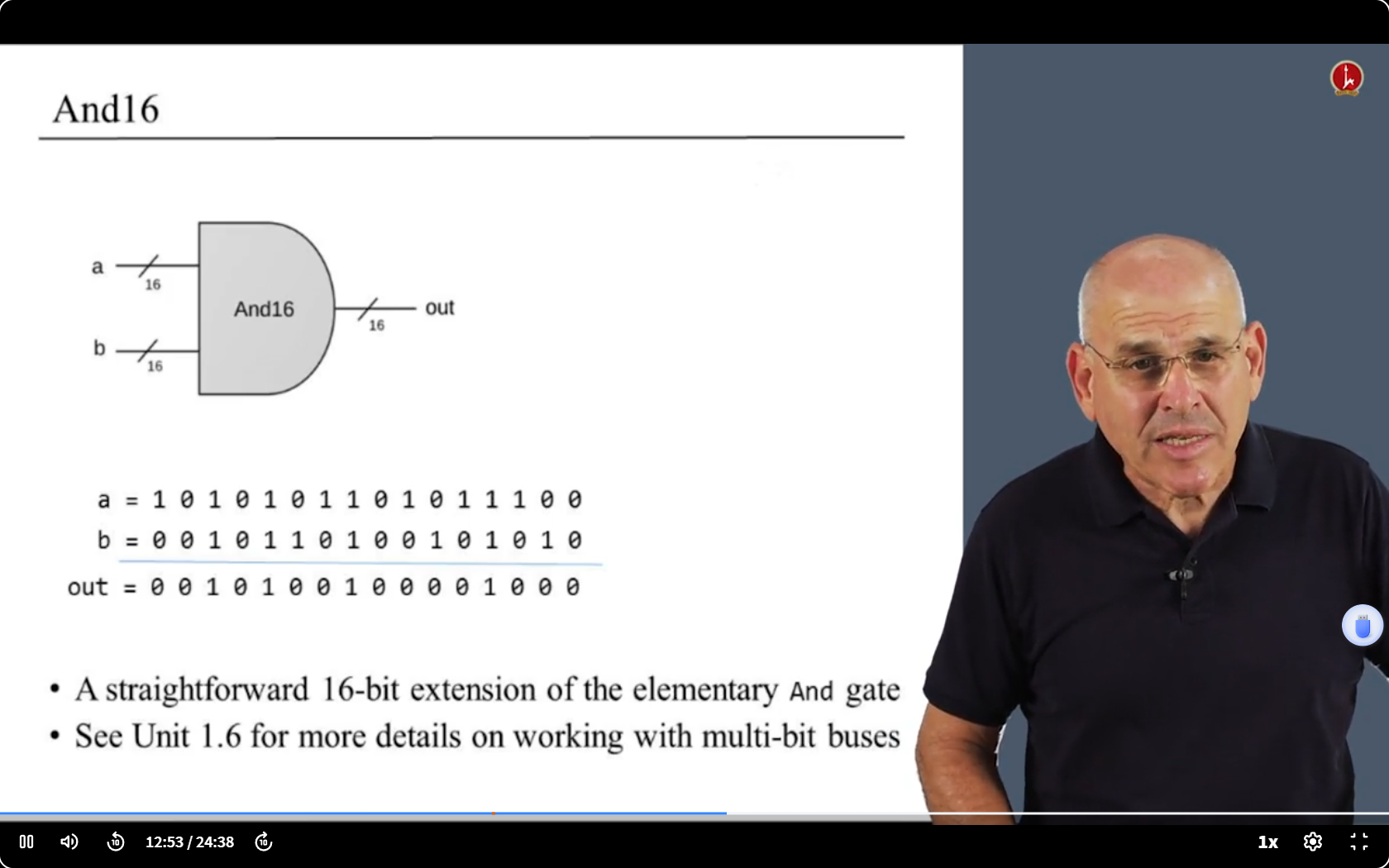
16-bit,4way multiplexor : 输入都是16位的,4个输入,一个16bit输出(mux逻辑,根据which sel进行选择)。
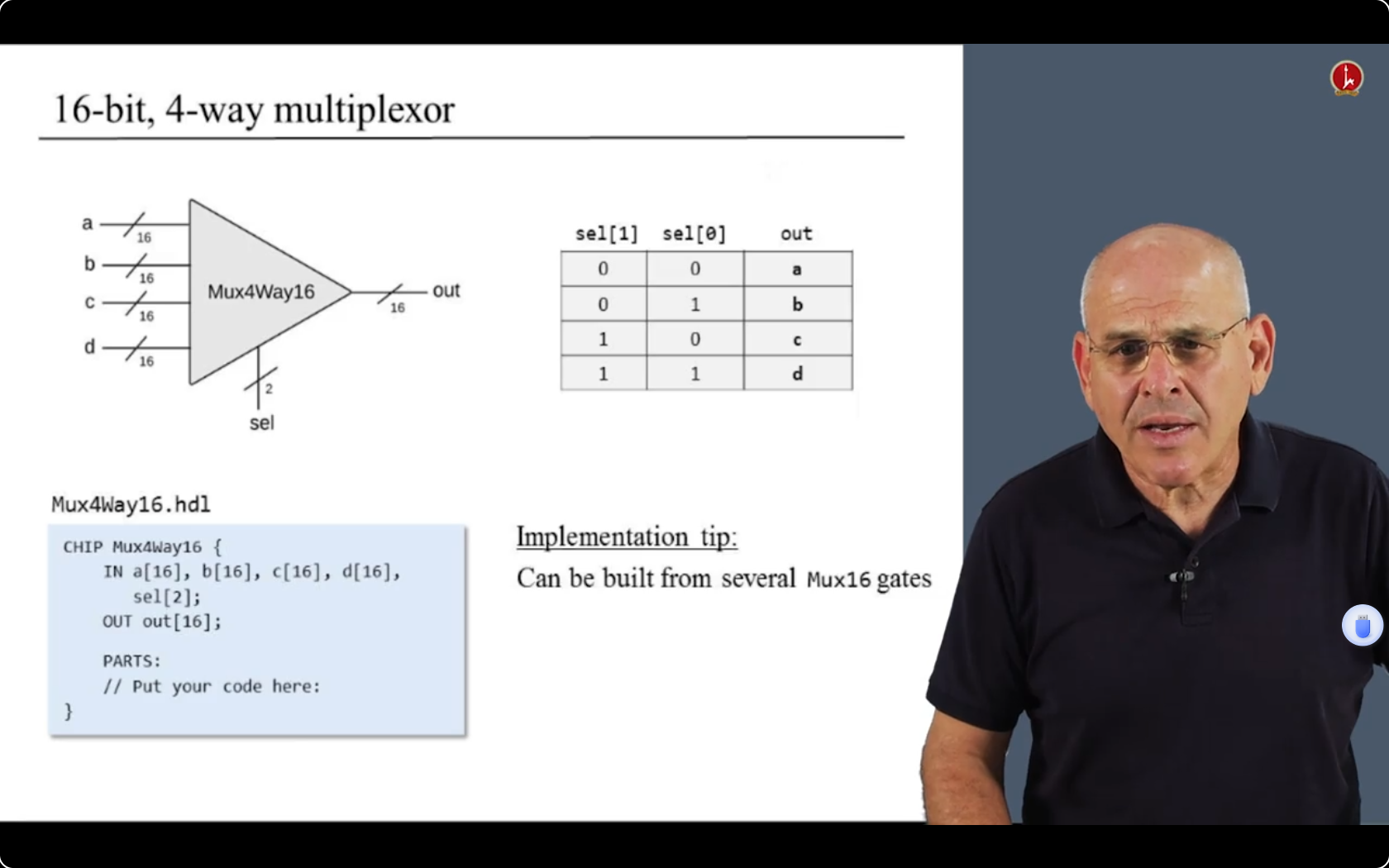
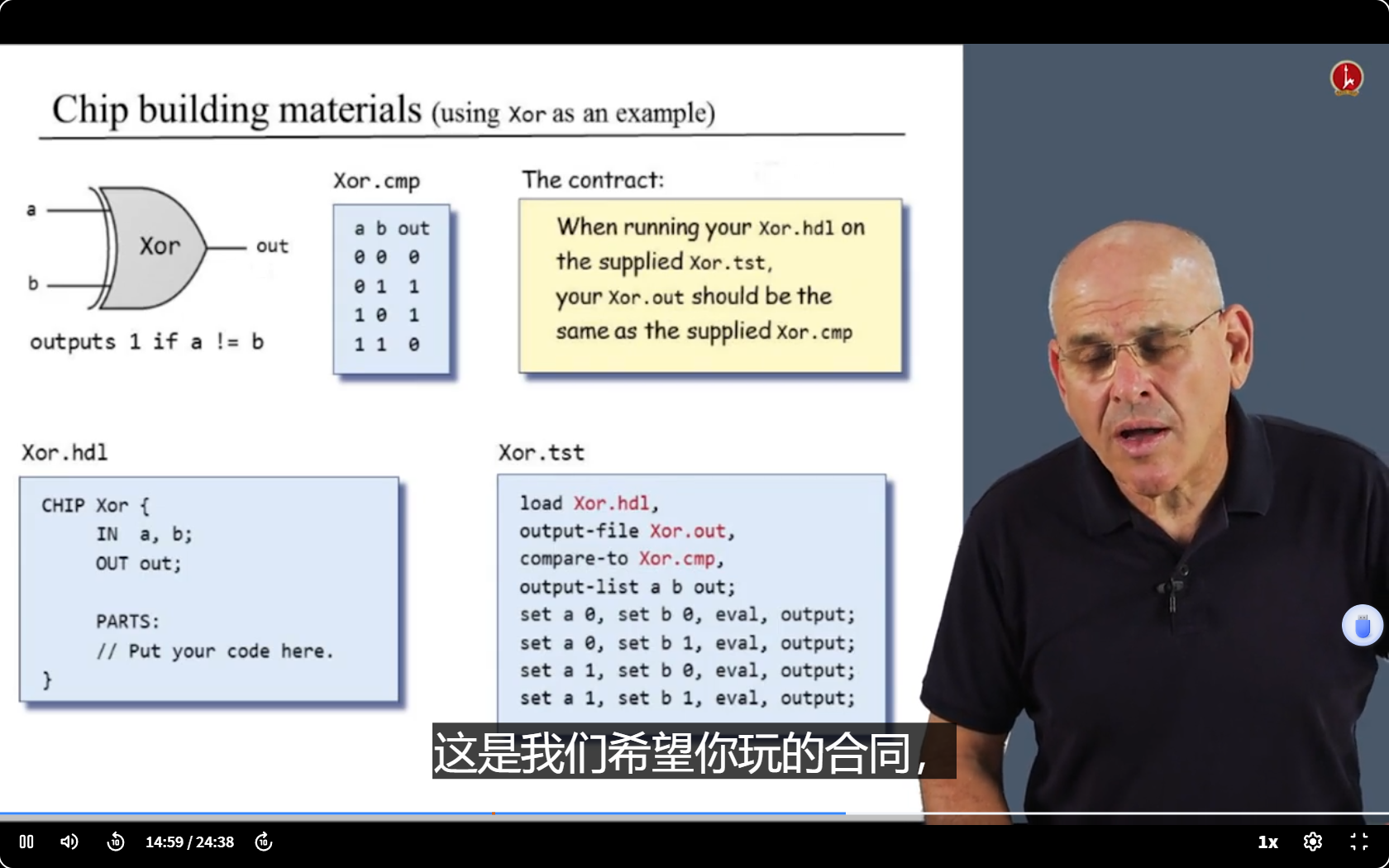
⭐ notes
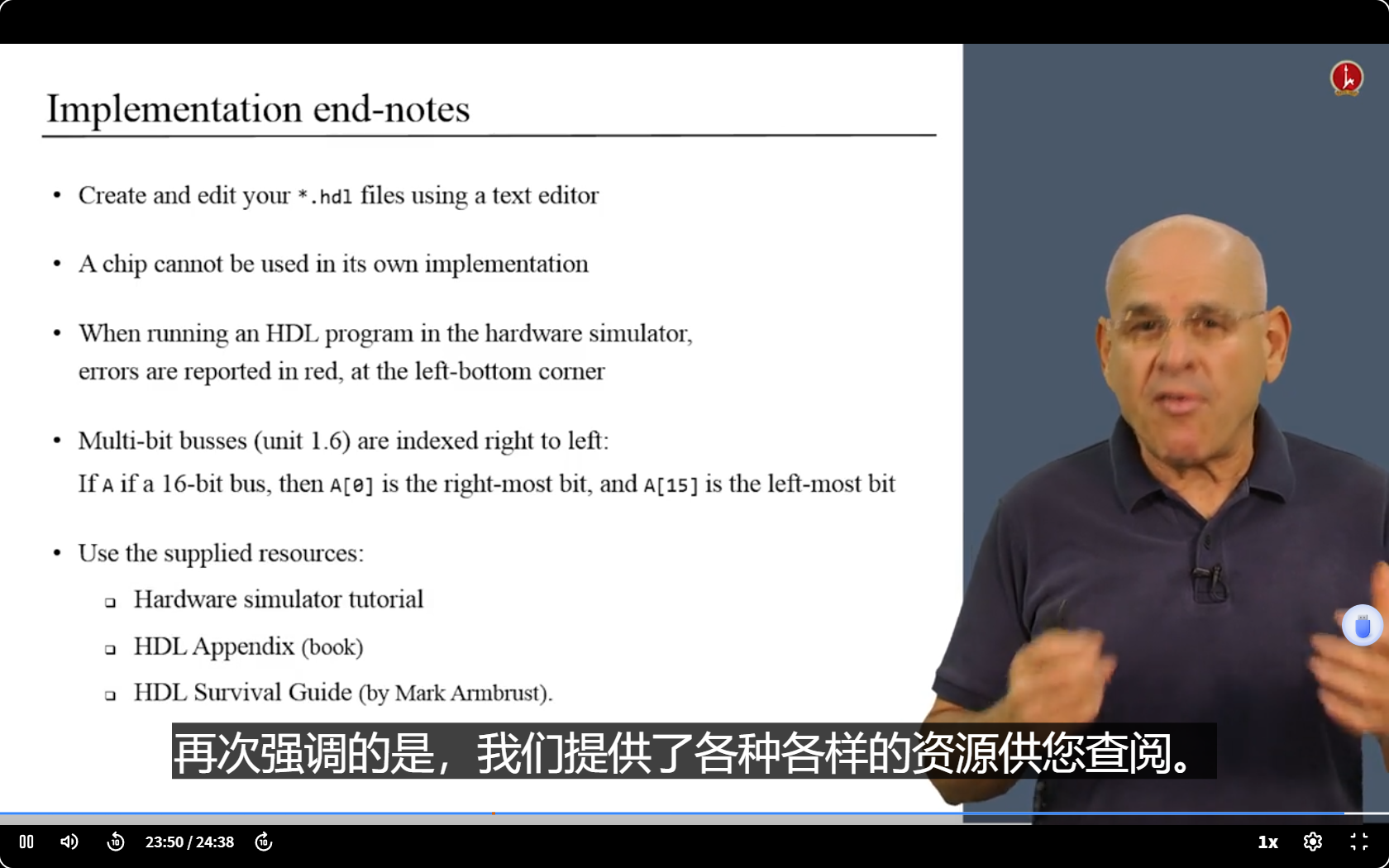
API

1.8 code
Nand
| x | y | out |
|---|---|---|
| 1 | 1 | 0 |
| 1 | 0 | 1 |
| 0 | 1 | 1 |
| 0 | 0 | 1 |
Not
1 | // Not gate : if (in) out = 0, else out = 1 |
And
1 | // And gate : if (a and b) out = 1, else out = 0 |
Or
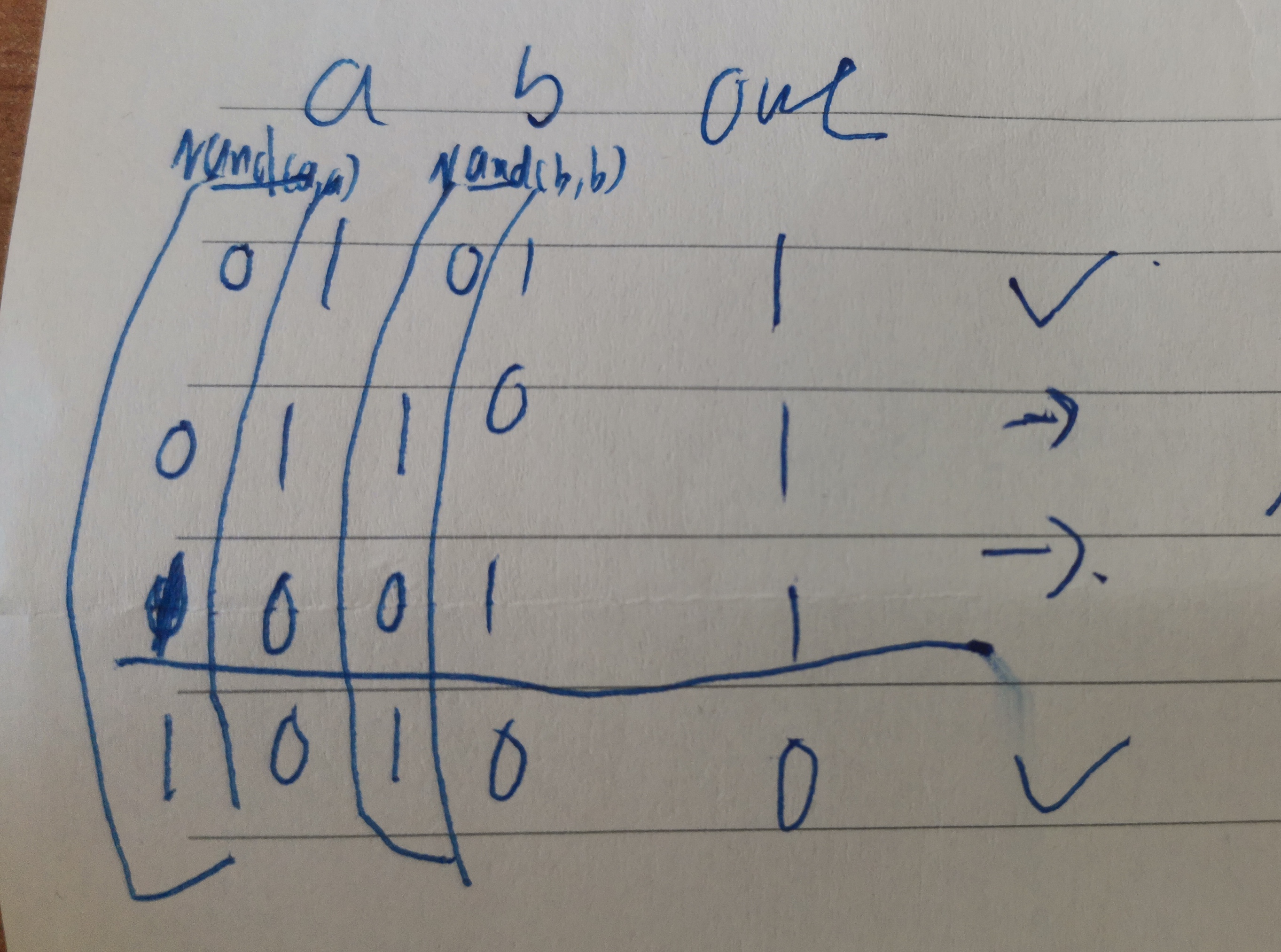
1 | // Or gate : if (a or b) out = 1, else out = 0 |
Xor

1 | // Exclusive-or gate: if ((a and Not(b)) or (Not(a) and b)) out = 1, else out = 0 |
Mux(二1bit并一)
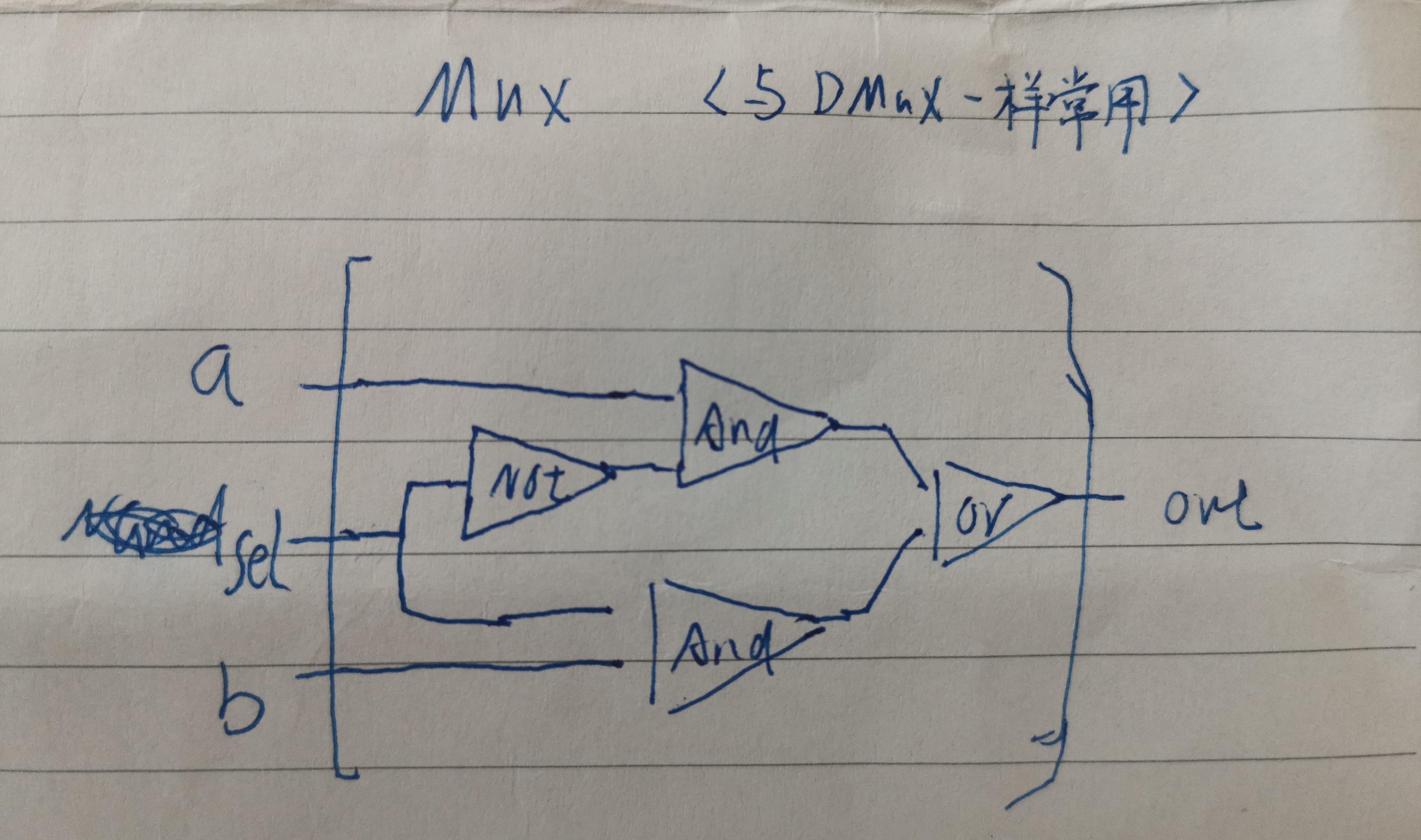
1 | // Multiplexor: if (sel = 0) out = a, else out = b (good!) |
Dmux(一解二)

1 | // Demultiplexor: [a, b] = [in, 0] if sel = 0 [0, in] if sel = 1 |
Not16

1 | // 16-bit Not gate: for i = 0, ..., 15: out[i] = Not(a[i]) |
And16
1 | // 16-bit And gate: for i = 0, ..., 15: out[i] = a[i] And b[i] |
Or16
1 | // 16-bit Or gate: for i = 0, ..., 15: out[i] = a[i] Or b[i] |
Mux16(二16bit并一)
- 实现方式:16个Mux并排作用与每一个bit
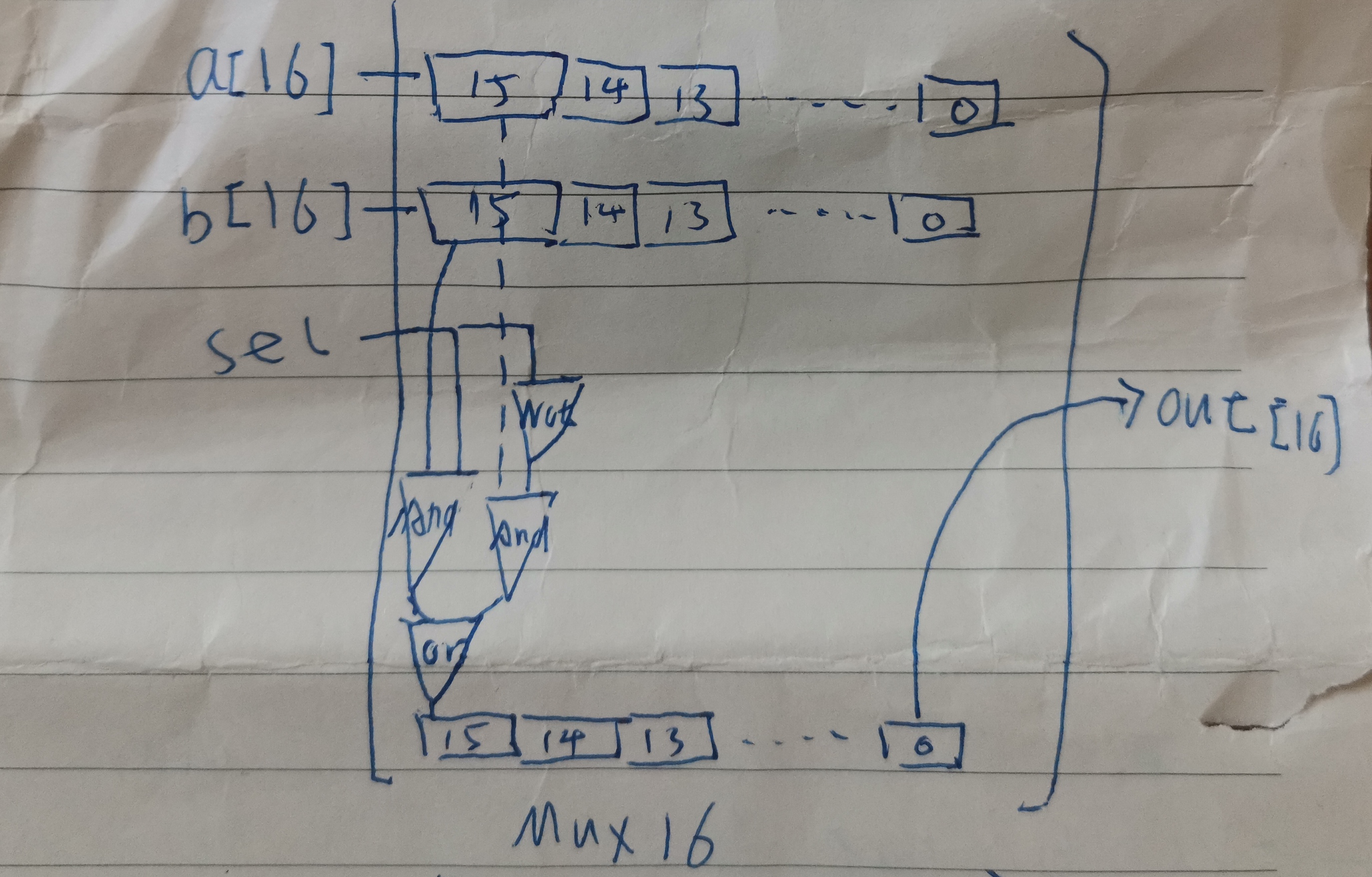
1 | // 16-bit multiplexor: for i = 0, ..., 15: if (sel = 0) out[i] = a[i], else out[i] = b[i] |
Or8Way
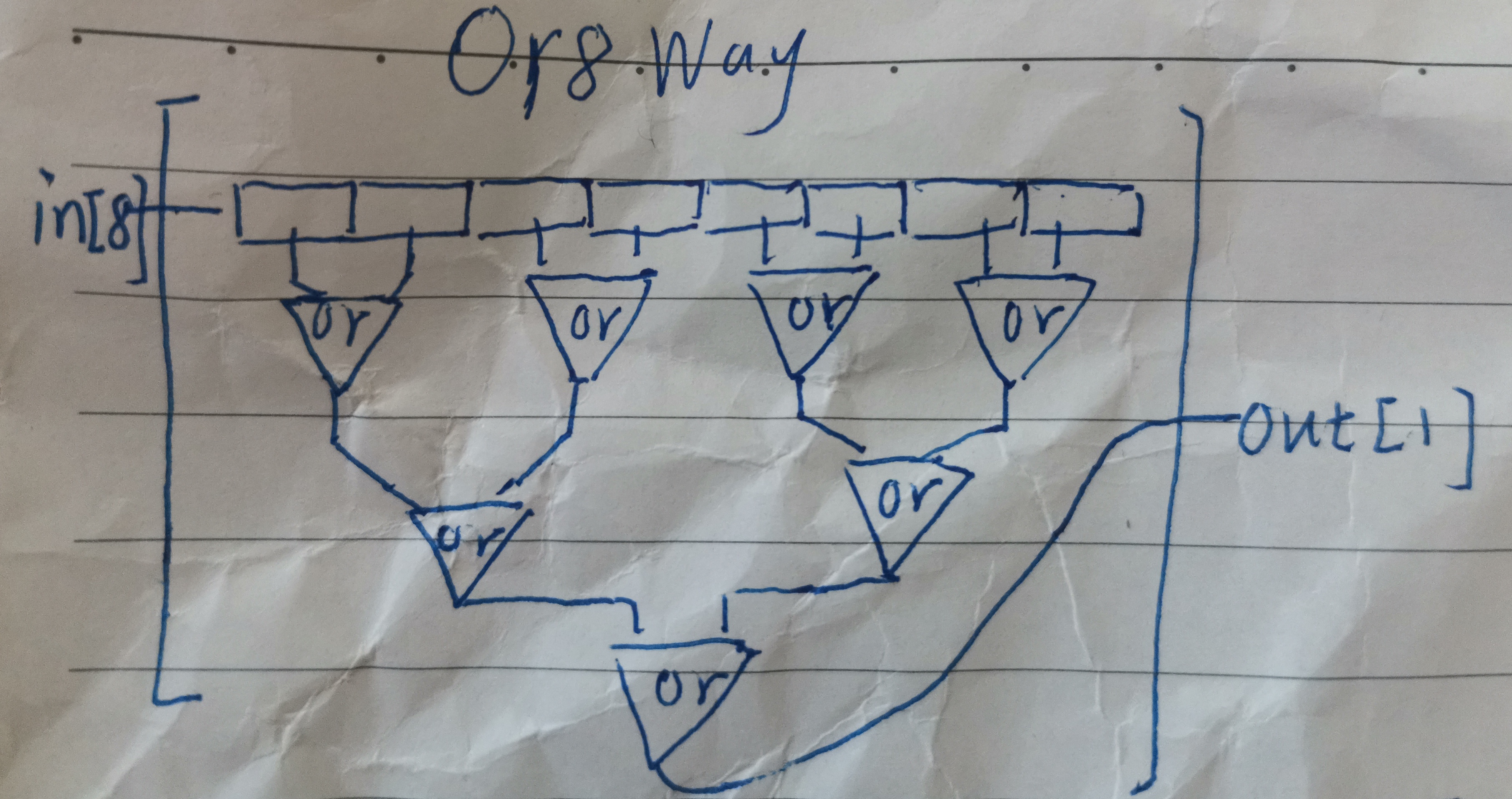
1 | // 8-way Or gate! out = in[0] Or in[1] Or ... Or in[7] |
Mux4Way16(四16bit并一)
解析名字含义:
Mux16 是 16-bit 的意思。
Mux4Way16 是 16-bit,4-way 的意思
那为啥 Or8Way 是 8-bit,1-way?的意思?
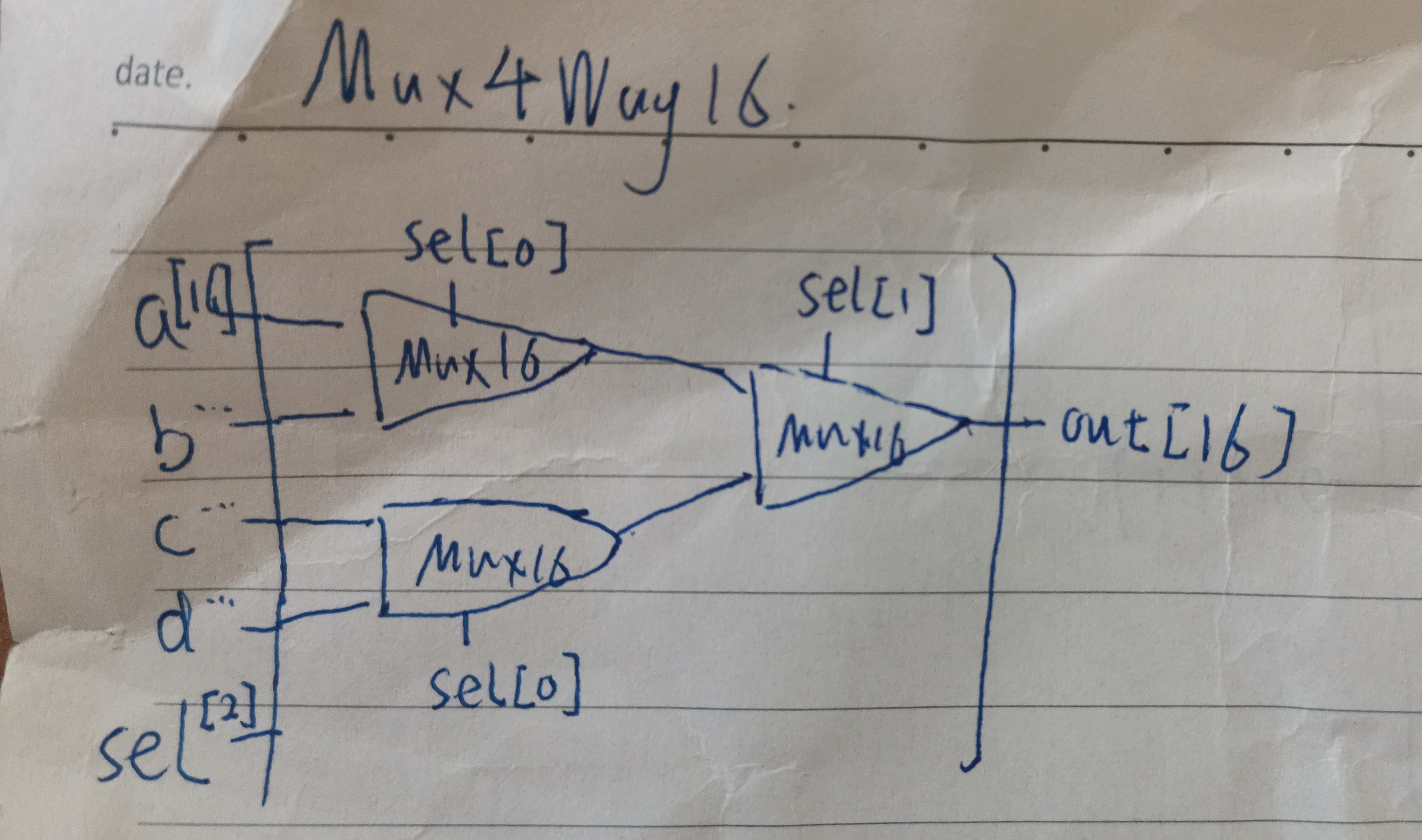
1 | /** |
Mux8Way16(八16bit并一)
1 | /** |
DMux4Way(一解四)
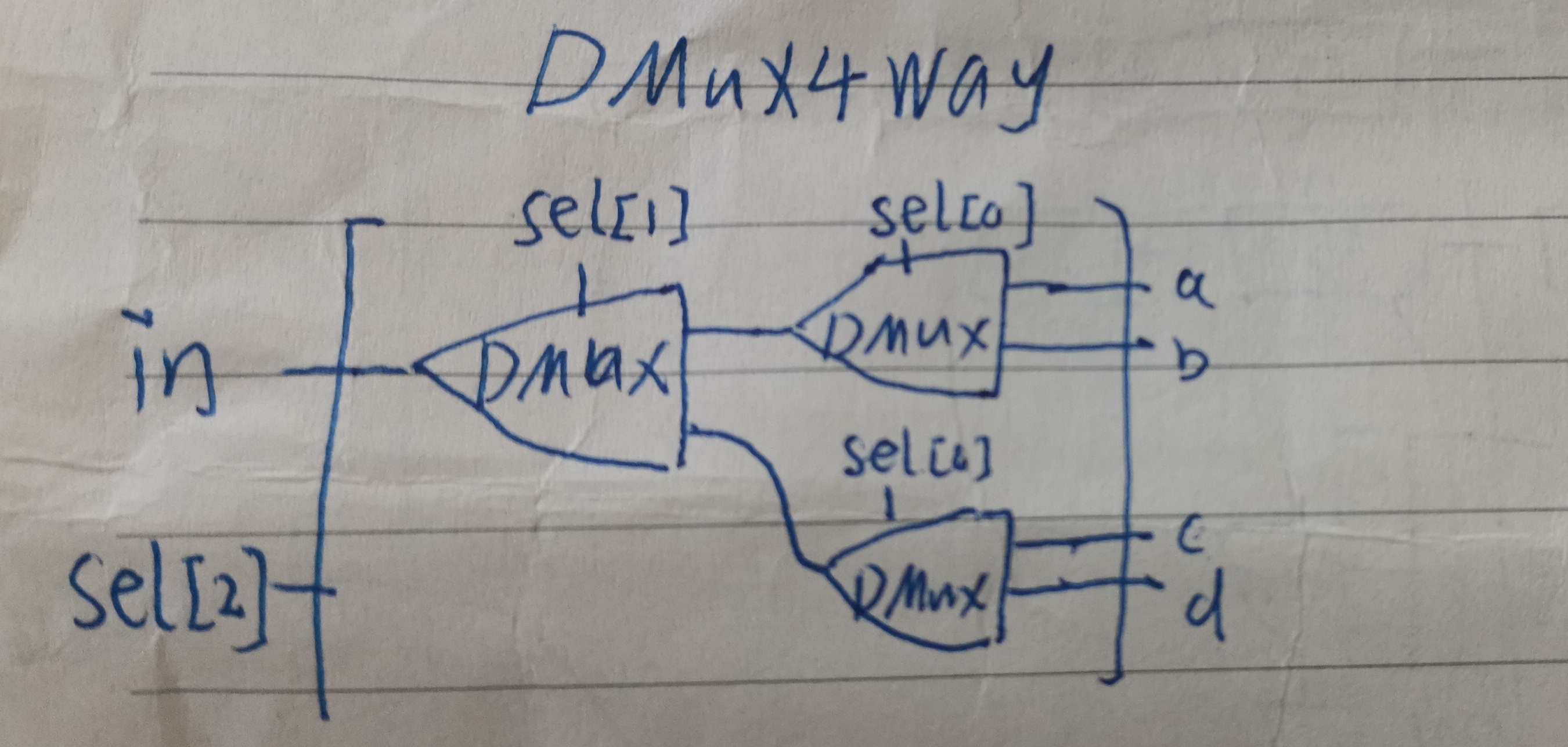
1 | /** |
DMux8Way(一解八)
1 | /** |
评论

